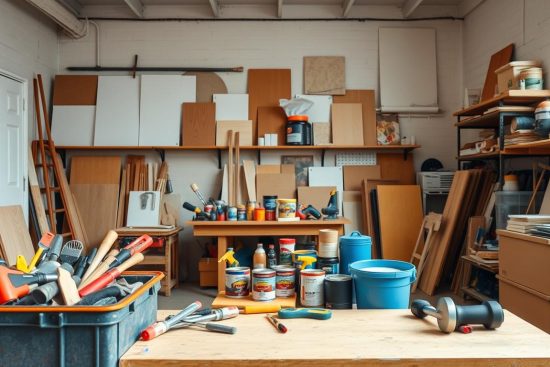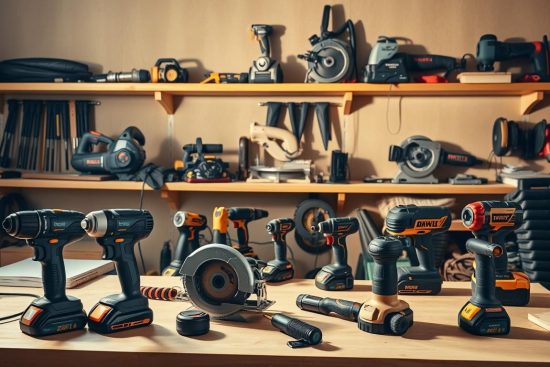Smart upgrades can transform your property’s appeal and equity. By focusing on strategic renovations, you align improvements with what today’s buyers prioritize. This approach ensures every dollar spent works harder to boost your investment.

Understanding local market trends is critical. Recent price shifts and buyer preferences shape which projects deliver the best returns. Tools like renovation calculators and real estate reports help identify high-impact updates without overspending.
Balancing aesthetics and functionality matters. For example, modern kitchens or energy-efficient windows often rank high in market data. Prioritize changes that blend personal enjoyment with broad buyer appeal. Timing your projects to match seasonal demand can also maximize results.
This guide simplifies the process. We’ll explore budget-friendly ideas, reliable data sources, and tips from industry pros. Whether you’re prepping to sell or enhancing your space, these steps make upgrades feel achievable—and rewarding.
Key Takeaways
- Market trends heavily influence which renovations boost equity.
- Prioritize updates that balance cost and buyer demand.
- Use online tools to analyze local price data before starting projects.
- Energy-efficient upgrades often rank high in buyer preferences.
- Align renovation timing with seasonal real estate activity.
The Fundamentals of Home Value and Renovations
Ever wonder why similar properties sell for wildly different prices? A property’s worth hinges on a mix of tangible features and external influences. Let’s break down what makes a space desirable—and how renovations fit into the equation.
Defining Home Value
Market worth isn’t just about square footage or paint colors. It’s shaped by two categories: intrinsic factors (like age, layout, and upgrades) and extrinsic elements (think school districts or local job growth). For instance, a 10-year-old kitchen might drag down your sale price, while proximity to parks could lift it.
| Factor Type | Examples | Impact on Value |
|---|---|---|
| Intrinsic | Roof condition, HVAC systems | Directly affects appraisal |
| Extrinsic | Crime rates, transit access | Shapes buyer demand |
Key Factors Impacting Property Worth
Recent sales in your neighborhood set the baseline. If three-bedroom estates sold for $450K last year, buyers will compare yours to those. Renovations that align with these trends—like adding energy-efficient windows—can push your price above average.
Neighborhood charm matters too. A well-maintained street with mature trees often boosts interest. But if nearby properties sit unsold for months, it signals softer demand. Always check year-over-year sales data before planning big projects.
Strategic Renovation Ideas to Boost Home Worth
Transforming your space doesn’t require a magic wand—just smart planning. Focus on improvements that blend style with practicality, and you’ll see measurable results. Let’s explore projects that deliver both immediate appeal and long-term equity growth.
Modern Kitchen and Bathroom Upgrades

Swap outdated features for sleek, functional designs. Quartz countertops and soft-close cabinets attract buyers, while smart faucets add modern convenience. In Los Angeles, homes with refreshed kitchens sell 18% faster than dated counterparts.
| Upgrade | Cost Range | Impact on Worth |
|---|---|---|
| Cabinet Refacing | $4,000-$9,000 | 72% ROI |
| Walk-In Shower | $3,500-$7,200 | 68% ROI |
| Energy-Star Appliances | $2,800-$6,100 | 81% ROI |
Enhancing Energy Efficiency and Functionality
Smart thermostats and attic insulation cut utility bills while boosting comfort. A home value estimator like Chase’s tool shows these upgrades can add up to $15K to your property’s estimate. “Insulation improvements often pay for themselves within three years,” notes a local contractor.
Low-Cost Transformations for Big Impact
Fresh paint and updated light fixtures work wonders. Try these budget-friendly ideas:
- Replace cabinet hardware ($150-$300)
- Install drought-resistant landscaping ($800-$2,500)
- Add crown molding ($7-$16 per linear foot)
Pair these changes with cost-effective remodeling strategies for maximum effect. In competitive markets like Los Angeles, even small updates help properties stand out. Always check your loan options early—precise estimates make financing smoother.
Effective Tools and Resources for Home Value Estimator
Knowing your property’s potential starts with accurate data. Modern tools blend technology and local insights to help you gauge equity shifts. Let’s explore how digital platforms and expert evaluations work together.
Online Home Value Estimation Methods
Digital estimators analyze millions of records to predict worth. Enter your address, and algorithms compare nearby properties, recent sales, and area trends. For example, platforms like Zillow factor in school ratings and lot size.
| Data Source | Impact | Update Frequency |
|---|---|---|
| Public Records | Legal details | Monthly |
| MLS Listings | Sales comparisons | Real-time |
| User Input | Custom features | On-demand |
Comparative Market Analysis and Professional Appraisals
While online tools offer speed, appraisers provide depth. Licensed experts assess everything from foundation cracks to roof quality. “An appraisal catches details algorithms miss,” says Denver evaluator Mara Lin.
Agents often prepare CMAs (Comparative Market Analyses) too. These reports highlight similar properties and adjust for unique features. Pair this with online home value tools for a 360-degree view.
“Digital estimates set the baseline—professional reviews confirm it.”
| Method | Cost | Turnaround |
|---|---|---|
| Online Estimator | Free | 2 minutes |
| CMA | $150-$300 | 3 days |
| Full Appraisal | $400-$600 | 1 week |
Combining these resources helps you spot renovation opportunities. Check your area’s permit records too—they reveal which upgrades neighbors are prioritizing.
Expert Tips for Renovating to Increase home value
Smart renovations start with smarter planning—not just hammers and paint. Balancing costs with potential returns requires clear strategies and trusted guidance. Let’s explore how to maximize results while minimizing financial stress.

Navigating Renovation Budgets and Financing Options
Start by setting a realistic budget. Bank of America recommends allocating 10-15% of your property’s current worth for upgrades. Compare prices from multiple contractors and explore these options:
- Home equity loans (fixed rates)
- FHA 203(k) renovation mortgages
- Personal lines of credit
Location plays a key role—urban areas often see faster approval for mortgage products. Always ask lenders about prepayment penalties or hidden fees. “The right financing options turn good ideas into achievable projects,” notes a Chase Home Lending advisor.
Selecting Trusted Real Estate and Renovation Professionals
Interview at least three agents before choosing one. Look for:
- Local market expertise (ask for recent comps)
- Renovation-specific certifications
- Transparent fee structures
Top contractors often book months ahead—start early. Check reviews on platforms like Angi and request a number of references. In competitive locations like Austin or Seattle, seasoned pros help navigate permit questions efficiently.
“A great agent doesn’t just list properties—they explain which upgrades attract buyers in your specific area.”
Keep communication open. Regular check-ins prevent budget overruns and ensure your vision aligns with market trends. With the right team and options, even complex projects feel manageable.
Conclusion
Making informed renovation choices today can unlock your property’s full potential. By focusing on strategic updates like modern kitchens or energy-efficient features, you align improvements with what buyers prioritize. Current market rates and neighborhood trends shape which projects deliver the strongest returns—tools like property analysis resources help identify these opportunities.
Reliable data remains your best ally. Online estimators and trusted agents provide real-time insights into shifting buyer preferences. Whether upgrading bathroom layouts or adding smart technology, balance personal taste with broad appeal to maximize financial outcomes.
Stay proactive. Regular reviews of local sales rates and renovation trends ensure your decisions stay relevant. Small steps—like refreshing paint or landscaping—can yield noticeable equity growth over time.
With the right resources and expert guidance, every upgrade becomes an investment in your property’s future. Start planning today, and watch strategic changes transform both comfort and long-term worth.


